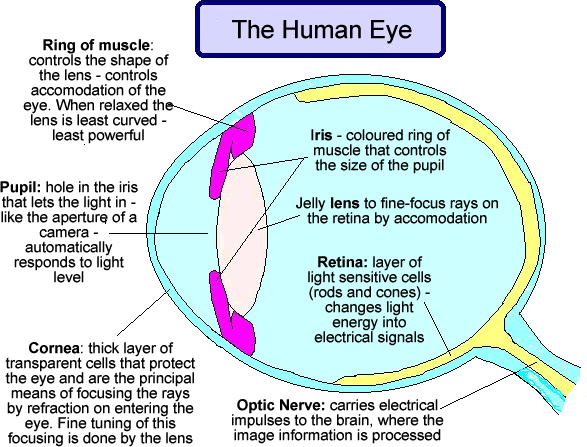The eye is the most fascinating and complex part of the human body, but have you ever wondered how does the eye work? The question will be answered in this article. Before knowing the answer to the question ‘how does the eye work’, we should first know what constitutes the eye.
Parts of the Eye
There is a lot that goes into the makeup of the eye itself. Here is what you need to know:
- Sclera: This is the white part which we see in the mirror.
- Iris: It is the pigmented or colored part of the eye. Humans have different eye colors according to the pigments present in their iris.
- Cornea: It is a clear dome like covering over the iris
- Pupil: It is the hole in the iris through which light enters.
- Conjunctiva: It covers the front part of the eye except the iris. It is composed of tissue, and is clear and invisible.
Parts of the Eye Located Behind the Iris
- Lens: It helps to focus the image and bend the light. It is convex in nature. It can change shape, i.e. it can be thick or flat according to the source of light.
- Vitreous Humor: It contains a fluid which helps to maintain the shape of the eye.
- Retina: The light focused by the lens is transferred on the retina which acts like a screen.
- Optic Nerve: It is nerve which takes signal from the eye to the brain.
Now That You Know The Parts – How Does the Eye Work’?
The light from the sun falls on objects around us. This fallen light enters our eye through the pupil. Depending on the amount of light the iris changes its size. The light which enters the eye through the pupil now falls on the lens. The lens focuses it on the retina which acts as a screen. The retina contains photoreceptor cells; they are of two types’ rods and cones.
The cones are responsible for detailed, sharp and colored vision, whereas the cones are responsible for night and peripheral vision. Macula is a region on the retina which has high density of photoreceptors; due to macula detailed images are formed. Each photoreceptor is connected to nerve fiber. These nerve fibers bundle up to form the optic nerve. The optic nerve along with nerve fibers reaches the brain where processing is completed and we see the world around us.

